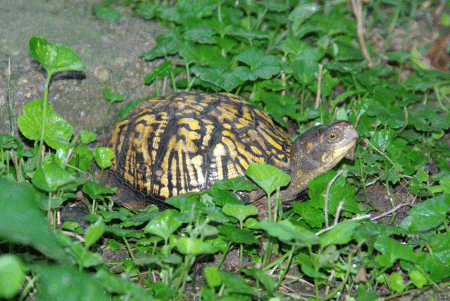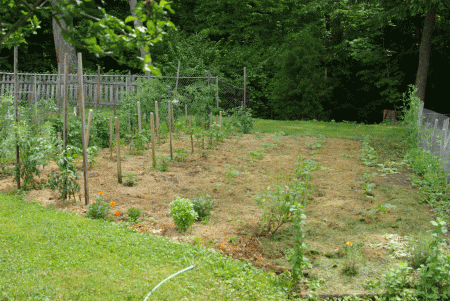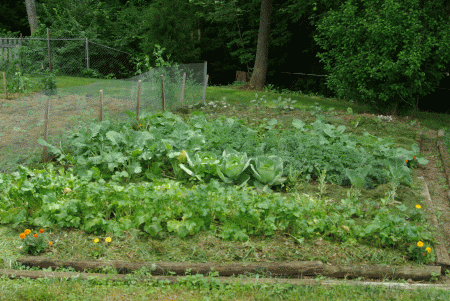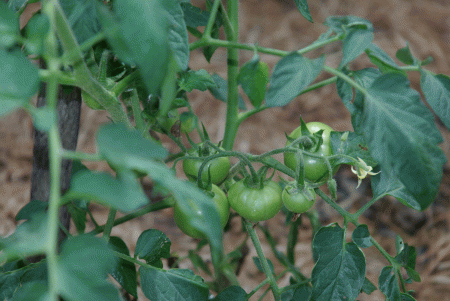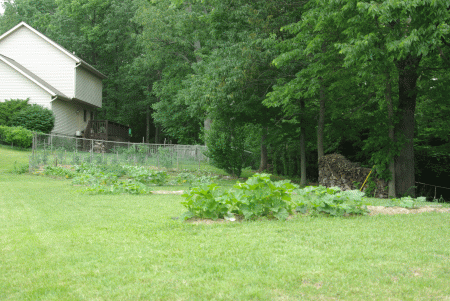The box turtle below came strolling through the garden on June 28, checking it out, then came on over to explore under the deck on the back of the house.
Every year the turtles enjoy their share of the low hanging tomatoes in the vegetable garden we grow each year. I figure they deserve their share. So far they have been around a lot longer than us humans, and probably have done a lot less damage to the planet than we have.
Here in South Central Indiana the average last hard frost had always been the first week of May, for Indianapolis, an hour north, it is usually still given as May 9th to May 19th. That does not seem to matter a whole lot anymore. This year we planted the tomatoes three weeks early, in mid-April, weather was perfect for tilling the garden and preparing it, and nurseries had plants ready for sale. Only once did I have to cover them just in case, when a frost was a possibility, but it only got down to the mid-thirties that night.
The next two shots show the two halves of the garden. The first one is tomatoes, various peppers, okra, and sugar snap peas on the fence, plus a couple of rosemary plants, a sage bush, and one basil plant. Too much rain made for poor growth of peas this spring.
The second half of the garden shown next has eggplant, collards, rutabaga, carrots, a couple of cucumbers, a few cabbages, turnips, and some fancy lettuces (which never seem to do well). I tried a row of white radishes, but it got hot so fast they bolted to seed and did not want to form good roots. I should have planted them even earlier.
This next shot of tomatoes on one of the vines was taken on June 22. About six weeks after usual last frost date. They are as advanced as what one would expect in mid-July, i.e. running a solid three weeks ahead of what used to be normal.
This last shot shows the main garden above in the background, and how we expanded onto the flat part of the back yard towards the camera. There are three strips, each about four feet wide. They are planted from back to front rows with: yellow squash and zucchini; acorn squash, spaghetti squash, and a sugar baby watermelon; and the strip closest to the camera has two kinds of pumpkins, one a larger variety, the second classic sugar pie pumpkins ideal for baking. The idea is to just let the vines grow out over the grass during growing season.
